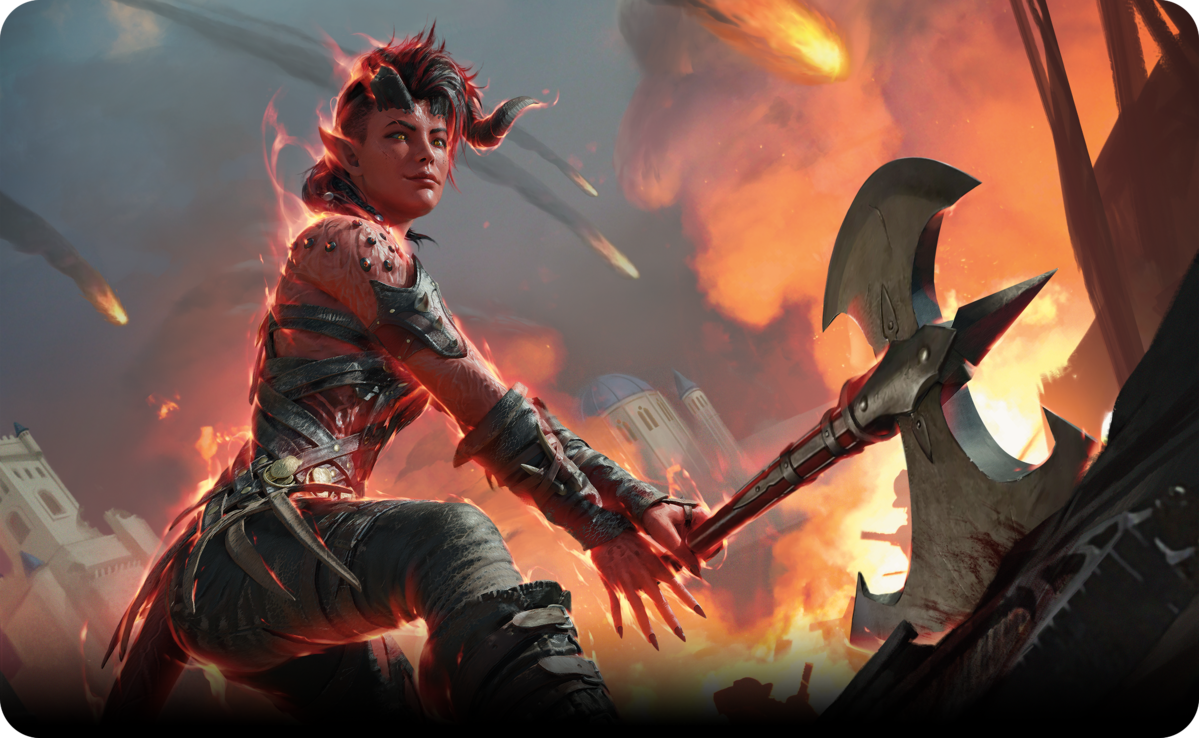Tagline: “Feast on life by candlelight, then snuff out the flame.”
View full decklist on Archidekt ›
Back at the Table
It’s been a minute since I’ve posted anything. Life got busy. Hectic. I squirreled off the project for a while. But I’m back—and I’m aiming for a bi-monthly deck tech cadence, which feels realistic (and fun). Let’s kick things off with a revisit to the deck that started it all.
A First Foray into Full Power
When I got back into Magic, Lux et Umbra was the first deck I built that wasn’t just “let’s see what this commander does.” I wanted something tuned. Intentional. Something that could hold its own when the table started pushing power.
I theorycrafted the list from the ground up and bought every piece. It was my first optimized Commander deck—and I learned a lot doing it.
Back then, the Bracket system didn’t exist, so I relied on the 10-point power scale, Commandersalt, and EDH Power Level. Useful tools, but hard to communicate clearly with. When the Bracket system launched, I finally had the language I needed: this is Bracket 4. High power, optimized, and built to compete while still being fun to pilot.
Why Astarion?
I played an unreasonable amount of Baldur’s Gate 3 during the early months of my daughter’s life (there’s a surprising amount of downtime in the first six months). Astarion became a fast favorite—and when I stumbled onto his Secret Lair cards later, I knew I had to build around him.
I considered making a jankier political brew at first, but my pod was trending upward in power, and I didn’t want to get left behind. So I leaned in. I built Astarion as a blood-soaked aristocrat with teeth—and Lux et Umbra was born.
How It Plays
This deck builds momentum. When the draw lines up, it’s near unstoppable. When it doesn’t, things can be a little sluggish.
The game plan plays out in three acts:
Act I – Early Setup (Turns 1–3)
- Ramp: Sol Ring, Land Tax, Smothering Tithe, Ancient Tomb, Chrome Mox
- Setup: Esper Sentinel, Mother of Runes, Black Market Connections
- Draw: Necropotence, The One Ring, Phyrexian Arena
Act II – Synergy Assembly (Turns 4–5)
- Stick Astarion, the Decadent with protection
- Tutor for win pieces or value engines
Act III – Closing Time (Turns 6+)
- Your usual lifegain/drain combos: Exquisite Blood + Vito, Thorn of the Dusk Rose/Sanguine Bond
- Or sweep the board with Exsanguinate or Debt to the Deathless
- Or churn through your library with Bolas’s Citadel + Sensei’s Divining Top + Aetherflux Reservoir
Favorite Interactions
- Astarion, the Decadent + Fraying Omnipotence - Near infinite lifeloss triggers and one problem player loses the game. If you have Tainted Sigil on the board, get ready to sac it and gain a ton of life.
- Fraying Omnipotence + Bloodletter of Aclazotz – Halve life totals across the board, then swing the rest.
- Bolas’s Citadel + Sensei’s Divining Top + Aetherflux Reservoir – If it sticks, I win.
- Peacekeeper – I had one game where every time someone forgot and declared attackers, I got to say: “Well… actually, you can’t.” Never gets old.
- The Perfect Stack – My first game ever with the deck ended with Greater Auramancy, Exquisite Blood, Smothering Tithe, and Sanguine Bond on board. Total lockdown.
The Weak Spots
This deck can be fast—but if you don’t draw ramp or tutors early, it’s slow. Three lands and no acceleration means you’ll be catching up instead of pressing advantage.
It’s also not great into mass land denial. My regular pods don’t run that stuff—it’s not fun for us—so I didn’t build with it in mind. But I had a Spelltable game recently where someone was running cards like Desolation and Storm Cauldron, and I had to fight just to keep Peacekeeper on the board. Paying 2 mana every turn for that effect in a resource-choked game is brutal.
The stax pieces (Peacekeeper, Aura of Silence, Drannith Magistrate) keep you safe until they don’t. Once the table has a way through, expect to be first in line for payback.
That said, it’s incredibly satisfying to get a well-timed “well, actually” in. Like when someone tries to cast through Aura of Silence or forgets they’re still locked out. And sacrificing Aura of Silence to kill Desolation? Very satisfying.
Why It’s Bracket 4
This deck has:
- Game Changers like Necropotence, Teferi’s Protection, Field of the Dead, The One Ring
- Fast mana
- Redundant combo lines
- Enough interaction to stay alive
Attribute Ratings
| Trait | Score | Notes |
|---|---|---|
| Speed | 7/10 | Wins around T5–6 with a clean line. T4 is possible with a nut draw. |
| Resilience | 6/10 | Some recursion via Replenish, Hall of Heliod’s Generosity. But your wincons are exposed if not protected. |
| Consistency | 8/10 | You’ve got 10+ tutors and redundant effects. Topdecking isn’t scary. |
| Interaction | 7/10 | Lots of removal and tax pieces, but no stack control. Timing matters. |
Looking Back
Lux et Umbra taught me how to build with purpose. It’s tuned and efficient, sure… But, it’s also a story. A story of control, restraint, temptation, and eventual indulgence. Astarion doesn’t just double life swings—he twists the whole tempo of the game toward inevitability, and he does it with style.
There’s a moment in every game where I feel the tension he carries. The cold calculation of Necropotence. The hunger of Exquisite Blood. The restraint of Peacekeeper, holding back something primal, something feral, for just one more turn. And the longer I’ve played this deck, the more I’ve realized it’s not just a pile of combos. It’s a reflection of a character who didn’t choose this life, but finds power in the wreckage of it.
“7,000 souls have given me the power to carve out my own future. And I want you to be part of it.”
That line echoes through every combo turn. With every draw from The One Ring, every secret line enabled by Hall of Heliod’s Generosity, every moment you float just out of reach behind Grand Abolisher, you’re channeling the same dark ambition: to never be powerless again.
Astarion’s journey from pawn to soverign is baked into every interaction. He isn’t trying to be good. He’s trying to be free. And if that freedom comes at a cost, if it makes him the villain in somone else’s story, so be it.
“The power to twist a mind to your will is worth some nightmares.”
That’s Lux Et Umbra. It’s deadly. It’s theatrical. And for better or worse, it plays exactly like the story it’s telling. Maybe that’s why I keep playing him. Not because he’s perfect, but because I see the struggle in the control. The tension between what we’re allowed to be and what we choose to become.





Start the conversation